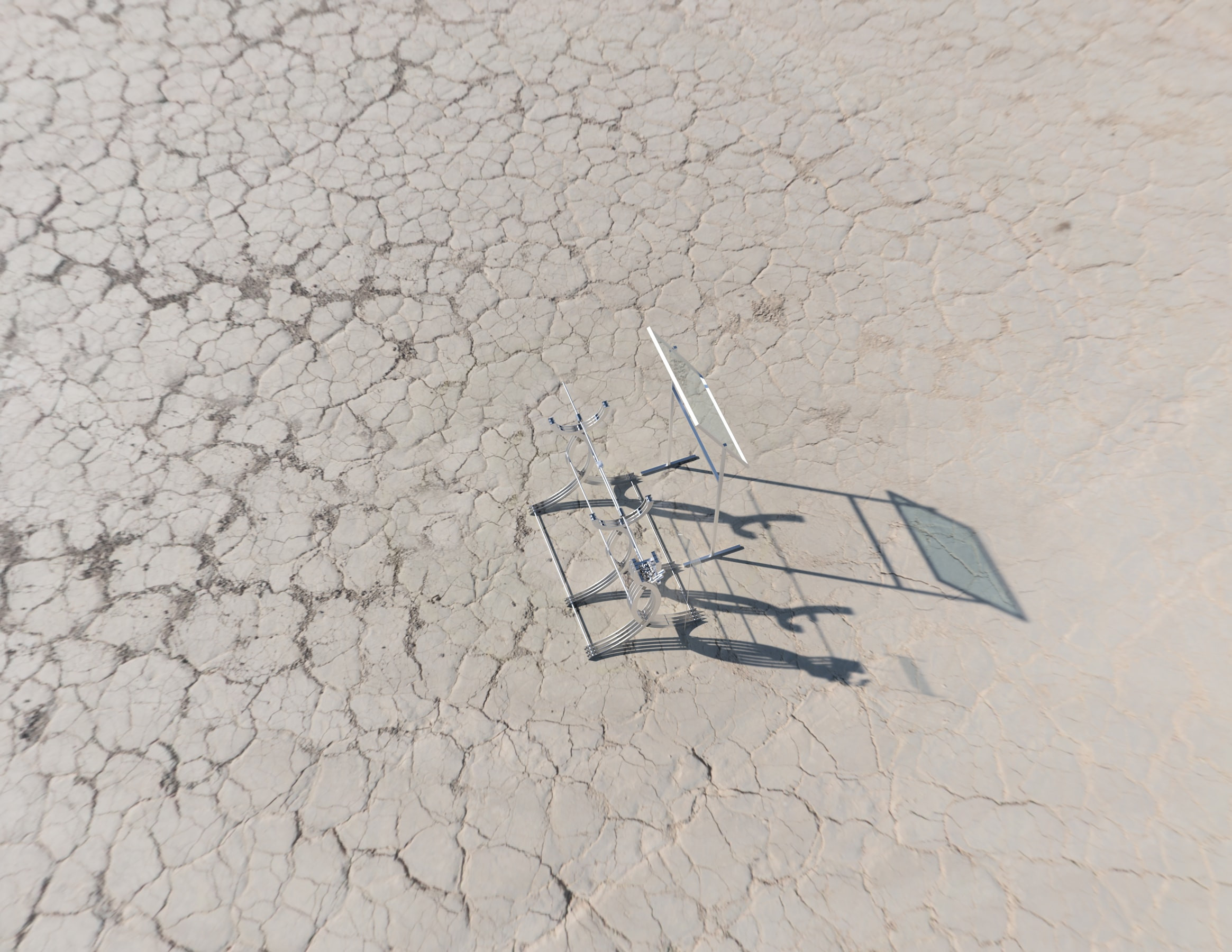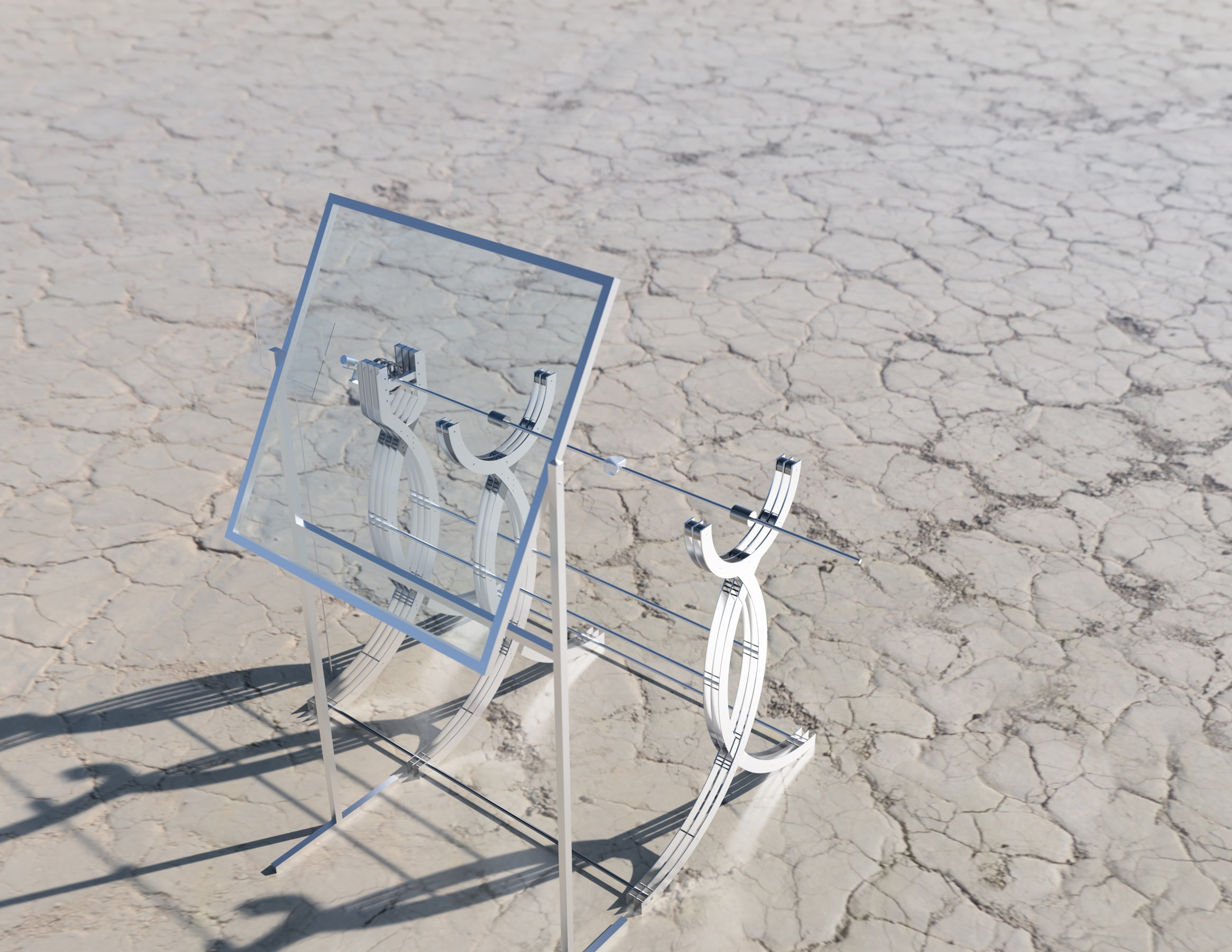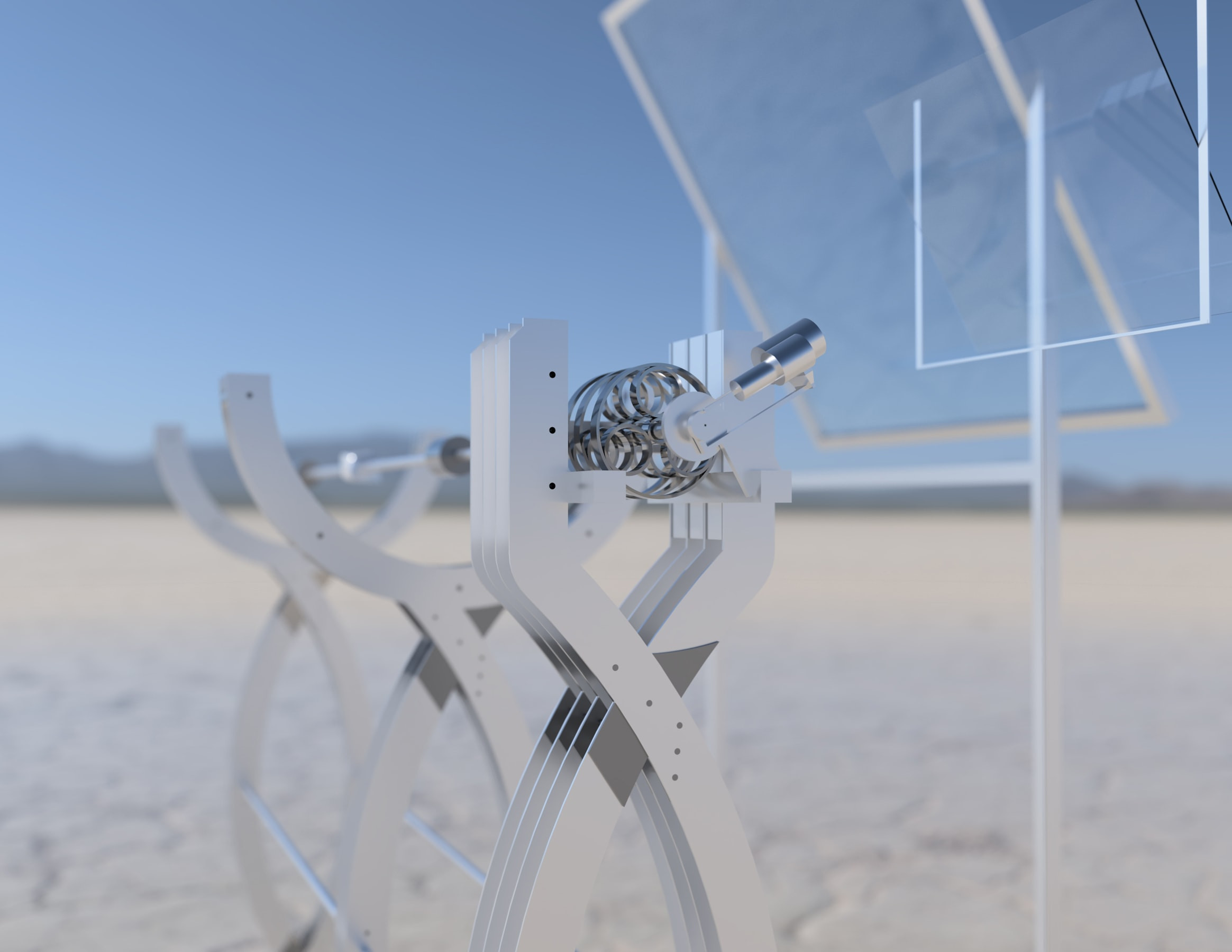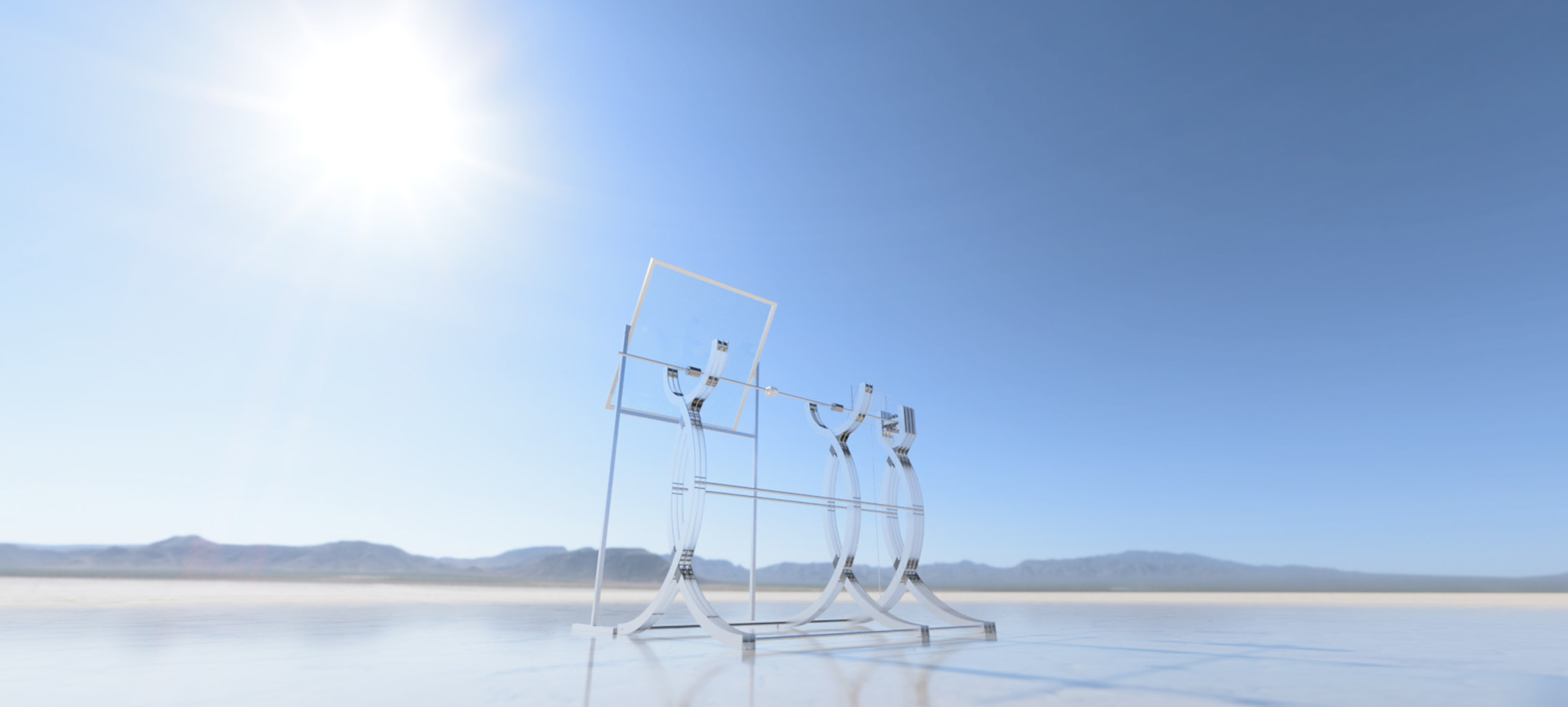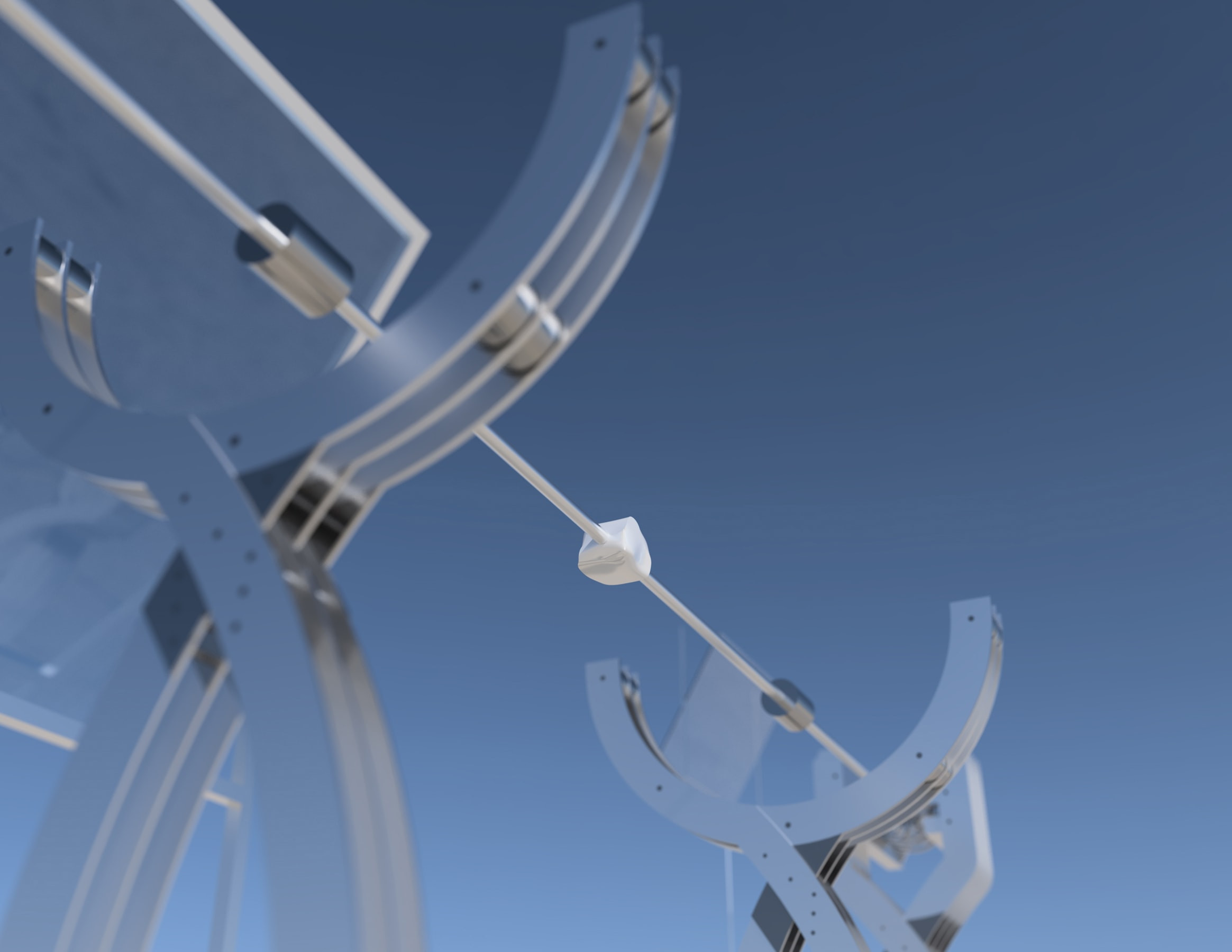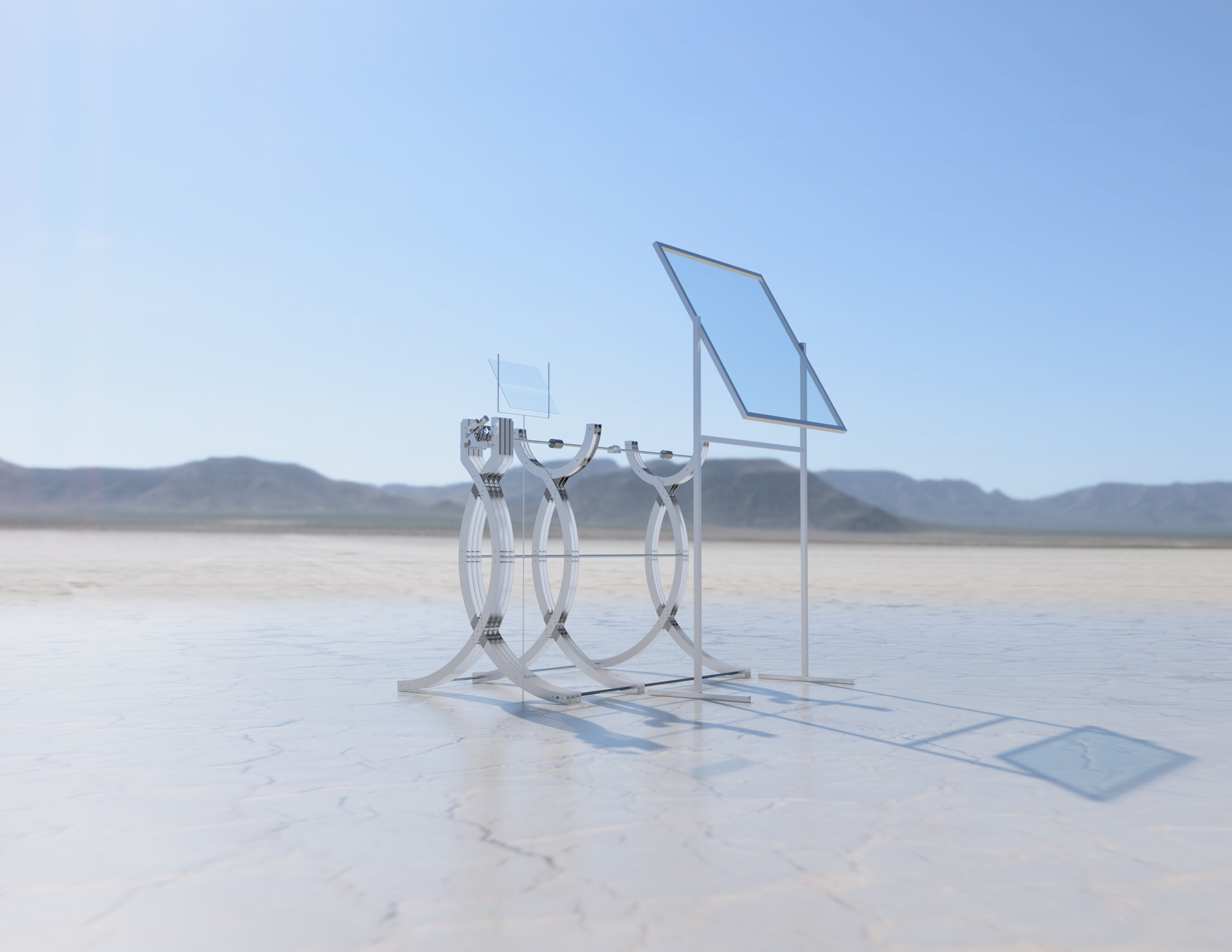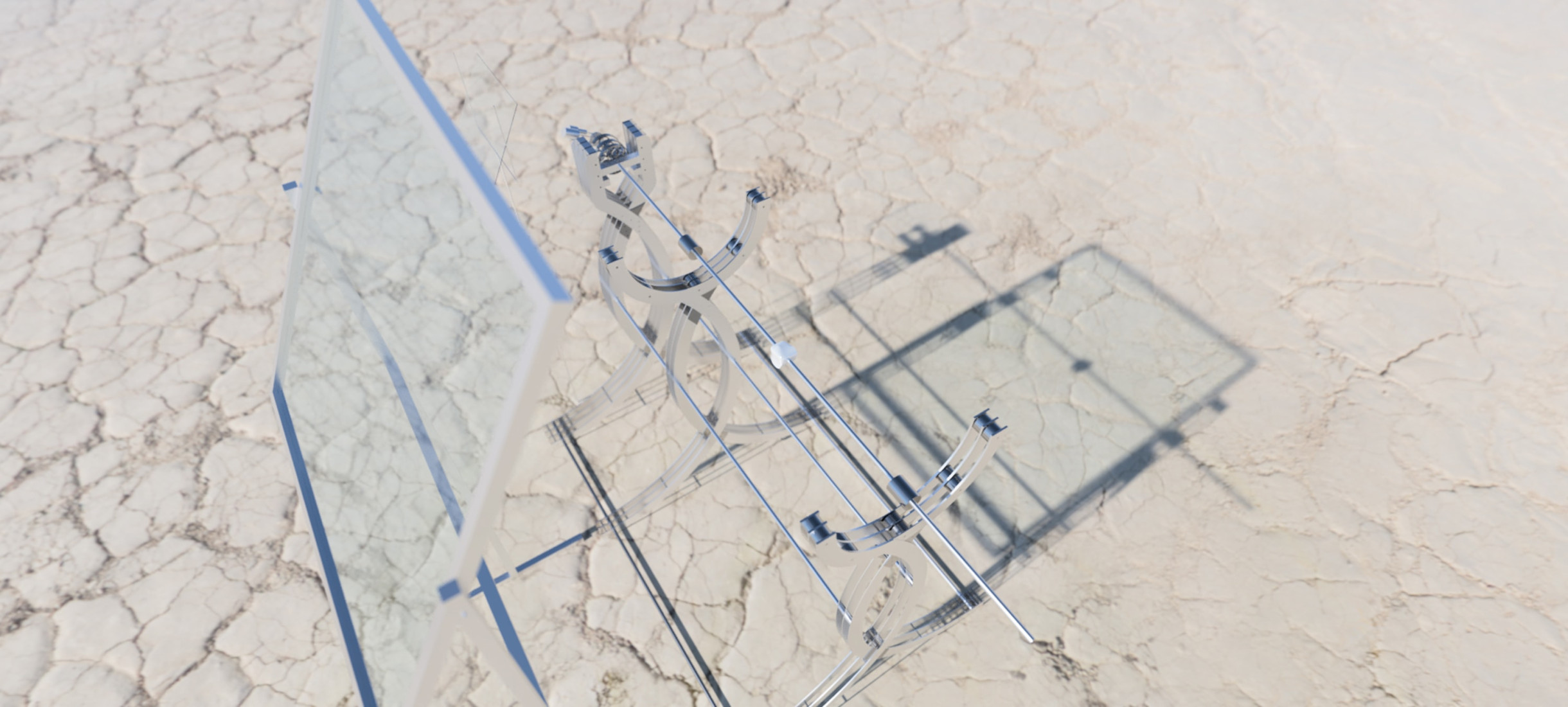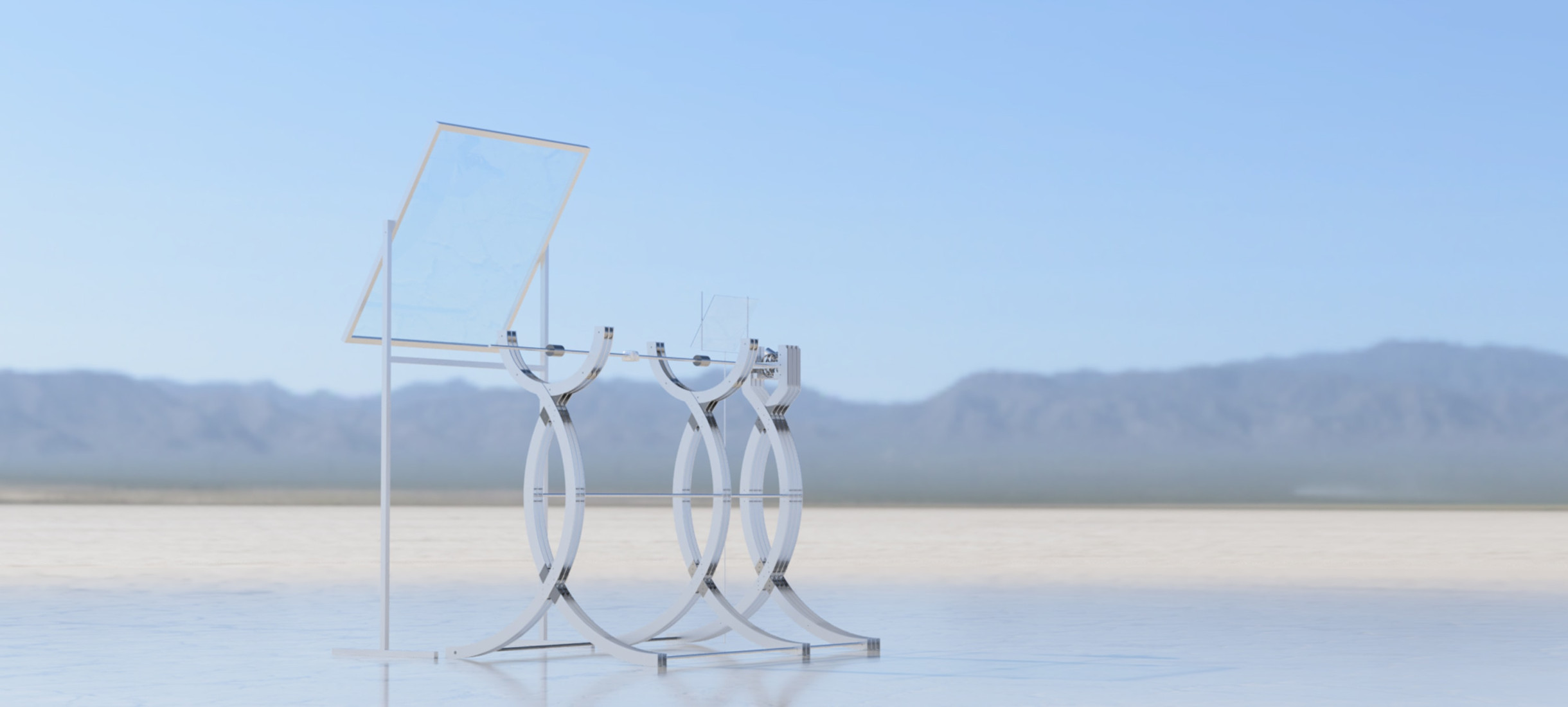Kryštof Brůha↓
Gallery
Links
Studies
| 2013–2019 | New Media 1, AVU (Tomáš Svoboda) |
About the work
What should people know about your work?
Inter Solaris represents a kinetic mechanism which, when placed at specific sites, employs solar radiation to transform stones located in its surroundings. The exhibition of the kinetic mechanism takes the form of a site-specific installation, its key aspect being to process stones at various locations. By connecting stone, time and the sun, this itinerant solar laboratory creates a record of an unrepeatable time interval. That is then presented in the form of objects—transformed stones which represent the location of the act of recording and in which it is possible to observe a scorched line made by rays of light.
How do you see yourself and your work five years from now?
As with artworks undergoing an evolution of viewpoint, the conceptual stability of the ostensibly finished diploma work titled Inter Solaris is not guaranteed. A coherent idea invested in an artistic execution represents the synthesis of previous artworks—and thus also the artist’s genesis. This itinerant solar laboratory is designed in such a way as to transform stones in various places with the aid of solar radiation, thus inscribing a unique time interval captured during the recording. For Inter Solaris, time is thus a key medium, as key as its independence of time. A horizon of five years is not as significant for this kinetic sculpture as it is for the viewers of the site-specific scorch marks. In other words, the observer/human being will feel the flow of time more intensely than the sun, the kinetic sculpture or the stone representing the medium. Therefore, I am myself curious about the impact these site-specific temporal burnings will have on viewers and on events going on while this action will be taking place. If, however, I make the virtual leap to 2024, I hope that we are observing the Inter Solaris solar laboratory at this very moment and that it is interesting through its travels and tracings not only on our continent, and that it represents an intermediate stage in the evolution of new ideas and artistic realisations.
